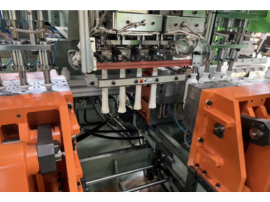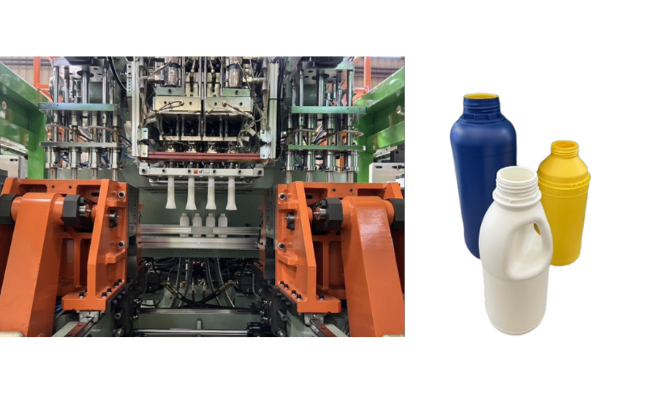- +886-4-2276-5071
- [email protected]
-
EnglishEnglish Español Türkçe Magyar العربية 繁體中文 Tiếng Việt Nam
-
EnglishEnglish Español Türkçe Magyar العربية 繁體中文 Tiếng Việt Nam

In addition to making money, can buying a bottle blowing machine also save money?
Hydraulic bottle blowing machine and servo bottle blowing machine are two common plastic bottle blowing equipment. They have some important differences in operating principles and technologies. Here’s how they compare, especially in terms of productivity and energy savings:

Hydraulic bottle blowing machine: uses a hydraulic system to provide power and controls the oil pressure to achieve the purpose of bottle blowing. Such machines typically include components such as hydraulic pumps, cylinders, and control valves.
Servo bottle blowing machine: uses servo motor as the power source, and achieves precise motion control by controlling the speed and torque of the servo motor. This kind of machine has higher control precision and flexibility.
Servo blow molding machines generally have higher production efficiency than hydraulic blow molding machines. Because servo motors can precisely control movement and acceleration, they can achieve faster production speeds and higher production quality. In addition, the servo system can also achieve fast start and stop, reducing downtime during the production process.
Servo blow molding machines are generally better than hydraulic blow molding machines in terms of energy saving. Although servo motors may have a higher initial cost, they are generally more efficient than hydraulic pumps. This is because servo motors only consume energy when needed, while hydraulic systems require a continuous supply of oil pressure to maintain operation, so they consume more energy throughout the entire production cycle. In addition, the servo system can further save energy by recovering braking energy.

・Comparison of power consumption between 65-inch hydraulic servo motor and traditional hydraulic motor

・Power consumption curve of plastic bottle blowing machine hydraulic servo and hydraulic traditional motor molding process

Video link: https:/ /www.youtube.com/watch?v=t-hCdZQtJEs
Share here, the equipment purchased by our Bangladeshi customer - a four-head multi-layer equipment with window lines/double stations, which can produce 8 finished products/bottles in one cycle. This machine is used for the production line of pesticide bottles/chemical bottles. In addition to the automated design, automatic waste removal and Japanese MOOG thickness control settings, a servo energy-saving drive is configured for energy-saving purposes in the mold moving part. In response to limited energy in the future and the continued rise of electricity bills, there is a budget. of customers generally purchase servo energy-saving systems.
In addition, in response to the current issue of green energy recycling, the raw materials of this double-layer equipment are made of new materials PE30% old materials (recycled materials) REPE/70% (customers can adjust the ratio of new and old materials by themselves).

In summary, servo motor blow molding machines are generally superior to hydraulic blow molding machines in terms of production efficiency and energy saving. Although servo systems have a higher initial cost, they often deliver greater energy savings and productivity improvements over the long term and are therefore widely adopted in many applications.
If you have bottle blowing or blow molding needs, please feel free to contact us !
The Xin Xin bottle blowing machine can be equipped with a servo motor. View Xin Xin Fully automatic extrusion hollow blow molding Machine P series.
back© FULL SHINE PLASTIC MACHINERY CO., LTD. 2019 All Rights Reserved.-Site Map
PRM Taiwan Designed by Polaris